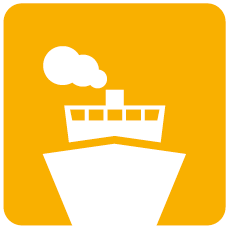Baltic Sea Action Plan
Reaching Good Environmental Status for the Baltic Sea
The Baltic Sea Action Plan (BSAP), adopted by the HELCOM Contracting Parties in 2007 and updated in 2021, is HELCOM’s strategic programme of measures and actions for achieving good environmental status of the sea, ultimately leading to a Baltic Sea in a healthy state.
Since its adoption, the BSAP has resulted in a number of environmental improvements such as a reduction in nutrient inputs to the sea, a better state of biodiversity and a decrease in maritime incidents and spills.
The BSAP provides a concrete basis for HELCOM work. It incorporates the latest scientific knowledge and innovative management approaches into strategic policy implementation, and stimulates goal-oriented multilateral cooperation around the Baltic Sea region.
Guided by the HELCOM vision of “a healthy Baltic Sea environment with diverse biological components functioning in balance, resulting in a good ecological status and supporting a wide range of sustainable economic and social activities”, the updated BSAP is divided into four segments with specific goals:
- Biodiversity, with its goal of a “Baltic Sea ecosystem is healthy and resilient”,
- Eutrophication, with its goal of a “Baltic Sea unaffected by eutrophication”
- Hazardous substances and litter, with its goal of a “Baltic Sea unaffected by hazardous substances and litter”, and
- Sea-based activities, with its goal of “Environmentally sustainable sea-based activities”.
Each of the four segments is structured around the updated HELCOM ecological and management objectives and contains concrete measures and actions to be implemented by 2030 at the latest.
The division of the segments seeks to reflect the pressures stemming from land (“Eutrophication”, and “Hazardous substances and litter”) and from the activities at sea (“Sea-based activities”), as well as the state of the environment (“Biodiversity”). These segments are interconnected: attaining the goal under the biodiversity segment also relies on the successful implementation of the actions included under the other three segments.
In addition, the section on horizontal topics addresses cross-cutting issues including climate change, monitoring, maritime spatial planning, economic and social analysis, knowledge exchange and awareness raising, hot spots, and financing. Furthermore, measures within all segments are designed to strengthen the overall resilience of the Baltic Sea, consequently improving its ability to respond to the effects of climate change.
The BSAP is further backed by the HELCOM Nutrient Reduction Scheme, a regional approach to sharing the burden of nutrient reductions to achieve the BSAP goal of a “Baltic Sea unaffected by eutrophication”.
The implementation status of agreed upon actions under the BSAP can be tracked here.
Vision
“A healthy Baltic Sea environment with diverse biological components functioning in balance, resulting in a good ecological status and supporting a wide range of sustainable economic and social activities.”
Goals and ecological objectives of the BSAP

Biodiversity
“Baltic Sea ecosystem is healthy and resilient”
- Viable populations of all native species
- Natural distribution, occurrence and quality of habitats and associated communities
- Functional, healthy and resilient food webs

Eutrophication
“Baltic Sea unaffected by
eutrophication”
- Concentrations of nutrients close to natural levels
- Clear waters
- Natural level of algal blooms
- Natural distribution and occurrence of plants and animals
- Natural oxygen levels

Hazardous substances and litter
“Baltic Sea unaffected by hazardous substances and litter”
- Marine life is healthy
- Concentrations of hazardous substances are close to natural levels
- All sea food is safe to eat
- Minimal risk to humans and the environment from radioactivity
- No harm to marine life from litter

Sea-based activities
“Environmentally sustainable
sea-based activities”
- No or minimal disturbance to biodiversity and the ecosystem
- Activities affecting seabed habitats do not threaten the viability of species’ populations and communities
- No or minimal harm to marine life from man-made noise
